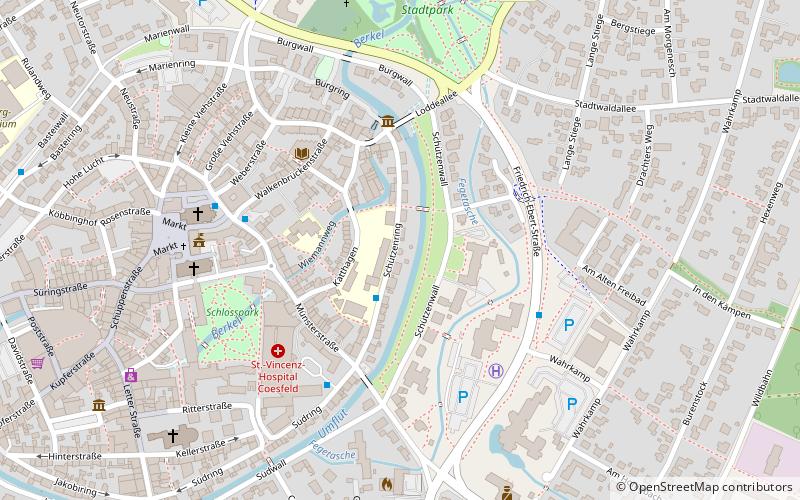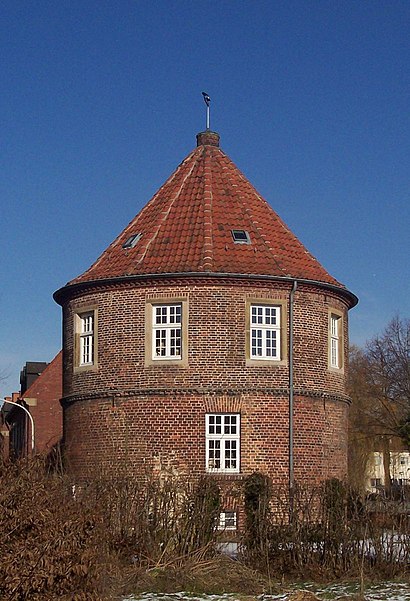Powder Tower, Coesfeld


Facts and practical information
The Powder Tower in Coesfeld dates from the 14th century and goes back to the former fortifications of the town.
Originally, the Powder Tower was built in the form of a three-story fortified tower with a pointed conical roof as part of the city fortifications between the Münstertor and Walkenbrückentor gates. Because of its proximity to the Marienbrink convent of the Coesfeld Augustinian nuns, it was initially named Schwesternturm, Süstern Torn and also Nonnenturm. During the time of witch hunts, bad things happened in this tower. During the Thirty Years' War and the Seven Years' War occupants used this tower. In 1762 it was partially destroyed and fell into ruin. In 1806 Engelbert Vissing acquired land from the monastery, which had been dissolved in 1803, and subsequently rebuilt the tower. For about 100 years it was part of the surroundings of the Vissing leather goods factory. It was acquired by the town of Coesfeld at the beginning of the 20th century and has been called Pulverturm ever since. On March 21, 1945, it was hit during the bombing of Coesfeld and burned out. After the war it was renovated and served as a private residence of a family until 1997. From 2002, the Heimatverein of Coesfeld took over the use and maintenance of the listed building.
Powder Tower – popular in the area (distance from the attraction)
Nearby attractions include: Coesfeld Cross, Walkenbrückentor, Jesuit Church, St. Lamberti.
Frequently Asked Questions (FAQ)
Which popular attractions are close to Powder Tower?
How to get to Powder Tower by public transport?
Bus
- Lambertischule • Lines: 672, 673, 674, 675, 677 (2 min walk)
- Kreisverwaltung • Lines: 677, 678, 711 (4 min walk)
Train
- Coesfeld Schulzentrum (13 min walk)
- Coesfeld (15 min walk)










